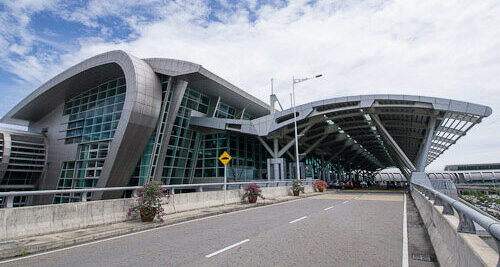
Malaysia - Lapangan Terbang Antarabangsa Kota Kinabalu
Kota Kinabalu International Airport (KKIA) plays a pivotal role in enhancing regional connectivity and economic growth in Kota Kinabalu, the capital of Sabah, Malaysia. Strategically located about 8 kilometers southwest of the city center, KKIA serves as a crucial gateway for both domestic and international travel. With a focus on efficient management, diverse airline operations, and future expansion plans, KKIA continues to contribute significantly to the region’s development.
KKIA, coded as IATA: BKI and ICAO: WBKK, stands as a medium-sized international airport that has witnessed impressive growth over the years. In 2019, it welcomed over 9 million passengers, solidifying its position as the second busiest airport in Malaysia for passenger and aircraft movements. This bustling airport serves as a hub for various airlines, including AirAsia, Malaysia Airlines, Firefly, and MASwings, connecting the region with key destinations.
Infrastructure and Facilities at Kota Kinabalu International Airport
Terminal 1: KKIA boasts two terminals, with Terminal 1 being the main hub. Terminal 1, with an annual capacity to handle 9 million passengers, features modern amenities such as 64 international and domestic check-in counters, immigration counters, baggage carousels, and 12 aerobridges to accommodate different aircraft sizes. The terminal’s strategic layout enhances the passenger experience while facilitating seamless movement.
Terminal 2: Initially the primary terminal, Terminal 2 shifted its focus to cater to low-cost carriers. Following a renovation in 2006, it reopened in 2007 with 26 check-in counters, parking bays, and luggage x-ray machines. However, the demand for expansion and consolidation prompted the relocation of airlines to Terminal 1, leading to the eventual closure of Terminal 2 in 2015. Terminal 2’s closure has paved the way for cargo operations and general aviation usage.
KKIA’s strategic location has made it a popular choice for airlines across the Asia-Pacific region. Carriers like Cathay Pacific, Singapore Airlines, Thai Airways International, and Korean Air have operated at KKIA, facilitating international connectivity. The airport has adapted to changing demands, welcoming various aircraft sizes, from narrow-body to wide-body, including Boeing 787 Dreamliner and Airbus A380. This flexibility ensures effective passenger and cargo handling.
Future Prospects: Relocation and Expansion at Kota Kinabalu International Airport
Efforts are underway to enhance KKIA’s infrastructure and operations. Plans for the relocation of the existing airport to Kimanis, known as KKIA@Kimanis, are in motion. This proposed relocation aims to create an expansive area of 6,070.5 hectares, including facilities for Maintenance, Repair, and Overhaul (MRO) within the aeronautics industry and aviation training centers. While discussions and feasibility studies are ongoing, the airport’s current capacity remains effective in serving the region’s needs.
Kota Kinabalu International Airport stands as a dynamic aviation hub, facilitating travel, trade, and growth in the region. Its strategic location, efficient operations, and future expansion plans demonstrate its commitment to providing exceptional services. As the airport explores opportunities for relocation and expansion, it remains a vital component in driving regional connectivity and fostering economic development.
